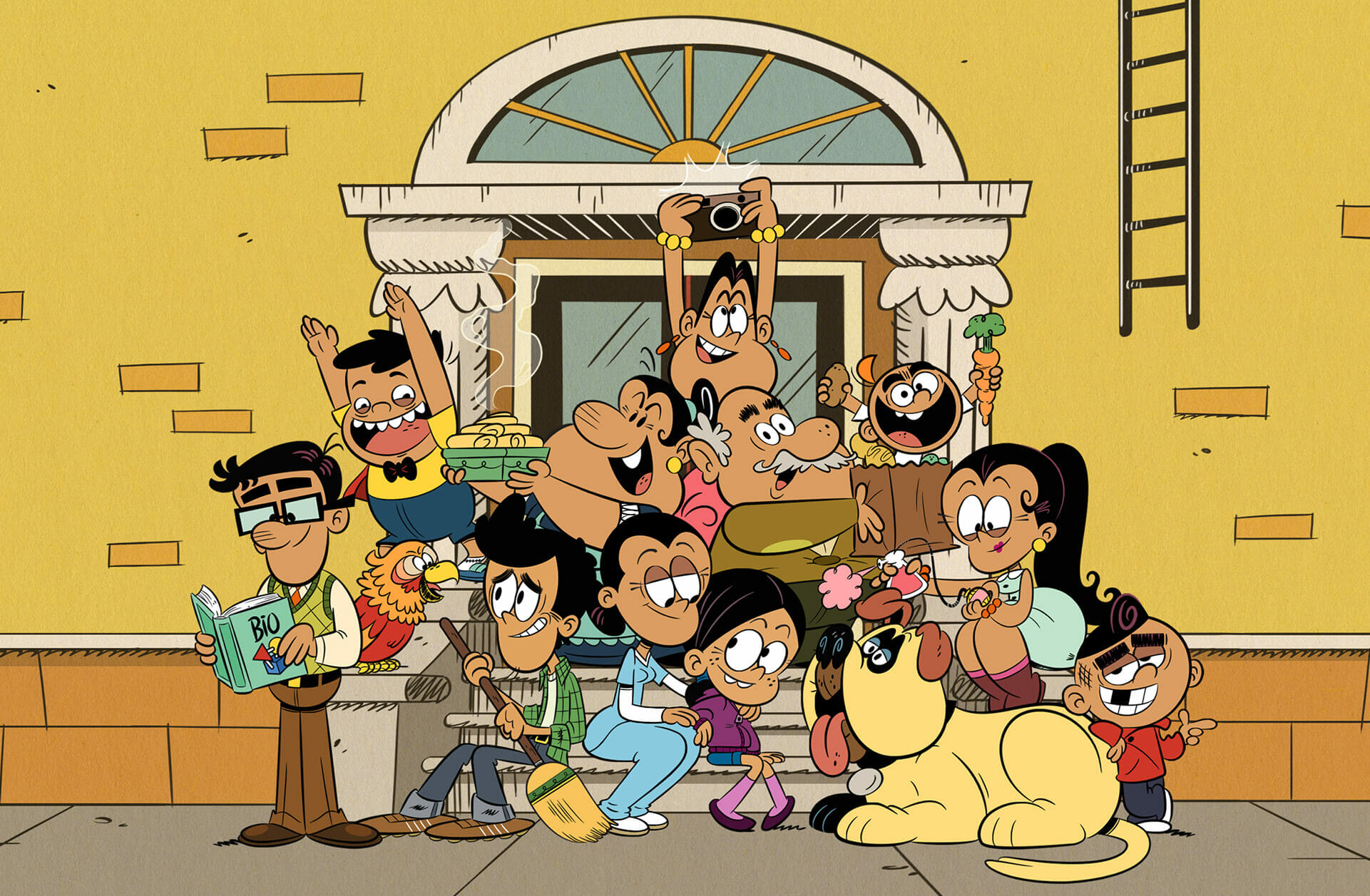
It started as a rumour. The first time Miguel Gonzalez heard about The Casagrandes, it was barely more than hushed speculation after a Mexican-American family had been introduced on The Loud House. Keeping his ear to the ground, eventually his friend, director Miguel Puga, told him the rumour was becoming reality — and he knew he had to be a part of it.
Flash forward and Puga is now co-executive producer and director on The Casagrandes, while Gonzalez serves as art director on the groundbreaking Nickelodeon animated series. The Loud House spin-off follows Ronnie Anne, her multigenerational Mexican-American family and their multicultural community in the fictional Great Lakes City (based on Chicago, with hints of New York City and Los Angeles). The show has been celebrated for its diverse, inclusive perspective.
“I don’t want to build walls; I just want to build the table longer so we can all have a seat. I have a daughter and I want her to see herself and have a role model in a character like Ronnie Anne and say, ‘I want to be like that when I get older,'” says Puga.

Having premiered to widespread praise in October 2019, The Casagrandes has already won an Emmy and was renewed for its third season before its second even launched. For Mexican-American artists like Puga and Gonzalez, the series is a dream come true — not only to help create a cartoon where their culture is focal and authentically shared, but also to have that representation both on-screen and behind the scenes.
The Casagrandes began while Puga was a storyboard artist on The Loud House, and he quietly transformed a new character from a redhead into a Latinx girl: Ronnie Anne. Catching the attention of the show’s producers and writers, he was asked to help them develop a show idea they had for Ronnie Anne and her brother Bobby.
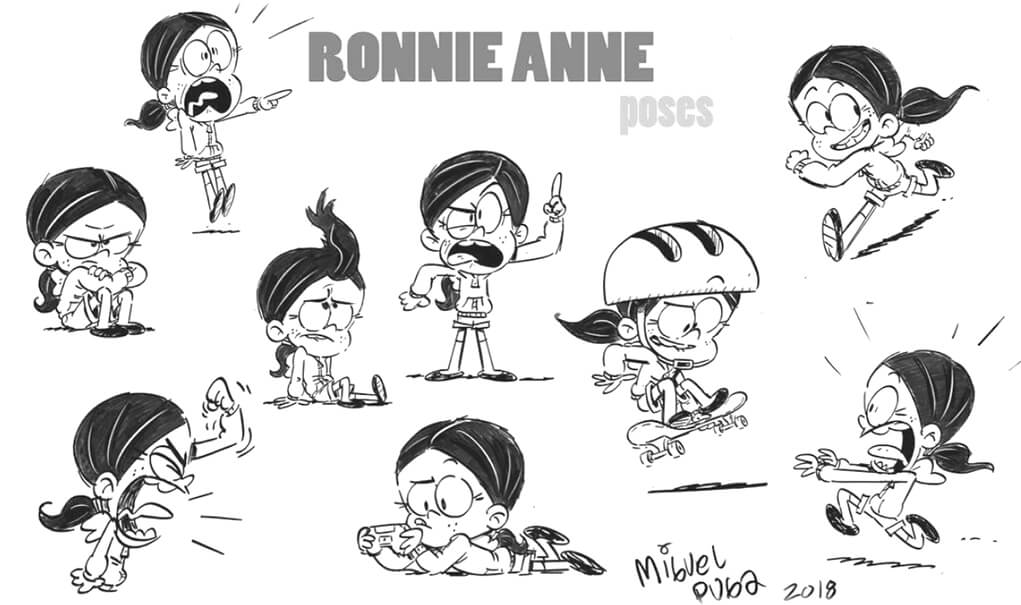
Puga pitched a concept based on his own life’s story growing up in a multigenerational Mexican-American family. That was in 2014. Not long after, the project got greenlit and he has subsequently built out a crew he describes as a family that works together and supports each other.
“One of the first things that I pitched to my producers was let’s make our cast and crew reflect the characters that we’re working on. I reached out to over 300 Latinx artists and I’m very proud to say I think we’re one of the most diverse crews in Burbank. A lot of our artists reflect themselves into the show — they pull characters and designs off of people they know or they grew up with,” says Puga.
It’s very important for kids also to see themselves reflected on TV
Miguel Puga
Gonzalez estimates at least 30 percent of the show’s team is Latinx, which helps contribute to the authenticity of the animation and art. He was brought onto the team by former The Loud House creative director Amanda Rynda and, while he was aware he could not change the style massively, he knew he had to bring in a more Mesoamerican colour palette — and Nickelodeon agreed.
The series’ palette draws inspiration from homes in Gonzalez and Puga’s families to artist Frida Kahlo’s house in Mexico City to luchador masks to pottery and textiles. Each source is brighter and more vivid than the last — a contrast to the more muted Michigan colour story of Loud House.
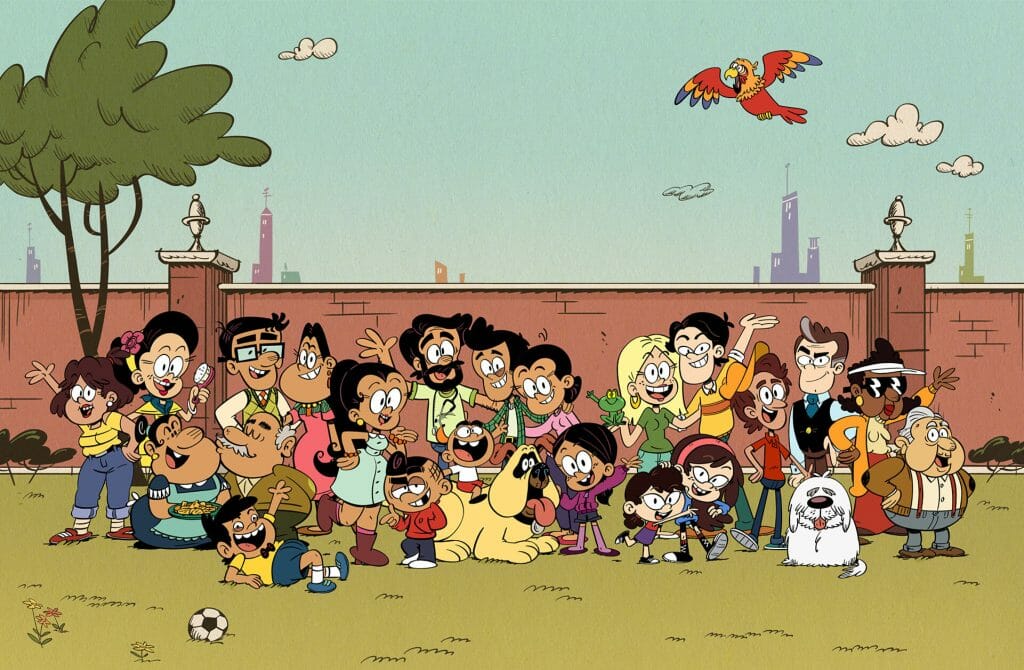
While statistics for toons are scarce, according to the TV portion of UCLA’s Hollywood Diversity report, Latinx actors represented only 6.6 percent of broadcast, 4 percent of digital and 5.5 percent of cable lead roles. Strides are being made in animation, with The Book of Life director Jorge Gutiérre attributing this to the Dora generation — a cohort of creators who grew up seeing a Latinx central character as normal, according to Variety. The proof is in the productions — Elena of Avalor, Victor and Valentino, Onyx Equinox — as well as rapidly growing industry groups like LatinX in Animation, founded by Magdiela Hermida Duhame in 2018.
For Gonzalez, representation is foundational to his work now: “On The Casagrandes, I can represent my culture — growing up, we didn’t really have that. I knew it was important for me to somehow be part of this so that we could be honest with our culture; I feel like a lot of people take on these cultural-themed shows, but they don’t bring on the talent that represents that culture. People can see right through it, so I want to make sure we’re being represented honestly because if you can’t relate to us, then what’s the point?”
The team is supported by cultural consultant and cartoonist Lalo Alcaraz, who served a similar role on Pixar’s Oscar-winning, Latinx-centred animated film Coco. Puga has been a long-time fan of his and he helps to ensure that Mexican-American traditions are shown in a way that can be universally understood and enjoyed, without ever making fun of them.
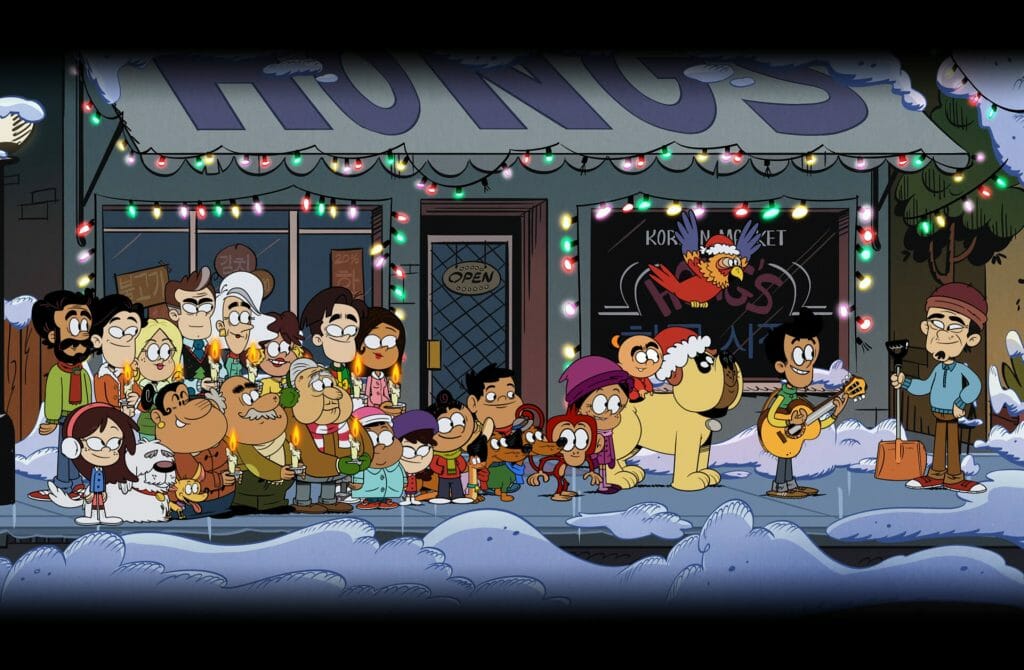
Puga notes that while the cultural context is different from The Loud House, the pipeline is quite similar — albeit with adjustments currently to adapt to the ongoing pandemic. He aims for the production to be as stress-free as possible, with a floating storyboard artist and designer available to ensure nobody ever becomes overwhelmed or overworked. With pride, he tells me everyone loves to work on the show.
Artistically, Gonzalez integrates drawing styles that overshoot lines, uses black fields to contrast all the vibrancy, and takes direct inspiration from Mexican folk art and culture — from Papel Picado and Sugar Skulls to food to winks to famous wrestlers like El Tigre. As he explored these kaleidoscopic facets of his culture and its shades, he created reference sheets for his painters and colour supervisors.
“I know we’re doing really well compared to other productions at Nickelodeon. [Our animation has] a really simple style, but we just make it look easy. Our stuff is comparatively pretty minimal. I think that’s one thing that’s cool about Casagrandes is that you don’t really need all the bells and whistles — just stories with heart that people can relate to,” says Gonzalez.
Looking towards Sunday comics strips, many American cartoonists also shaped The Casagrandes’ animation style including Walt Kelly, Hank Ketcham of Dennis the Menace and Charles Schultz of Peanuts as well as Spanish-Mexican illustrator and writer Sergio Aragonés. Blending contemporary film and television references like the work of Quentin Tarantino and Samurai Jack with old-school toons was also elemental, with The Casagrandes’ matriarch Rosa having black dots for eyes similar to The Flintstones.
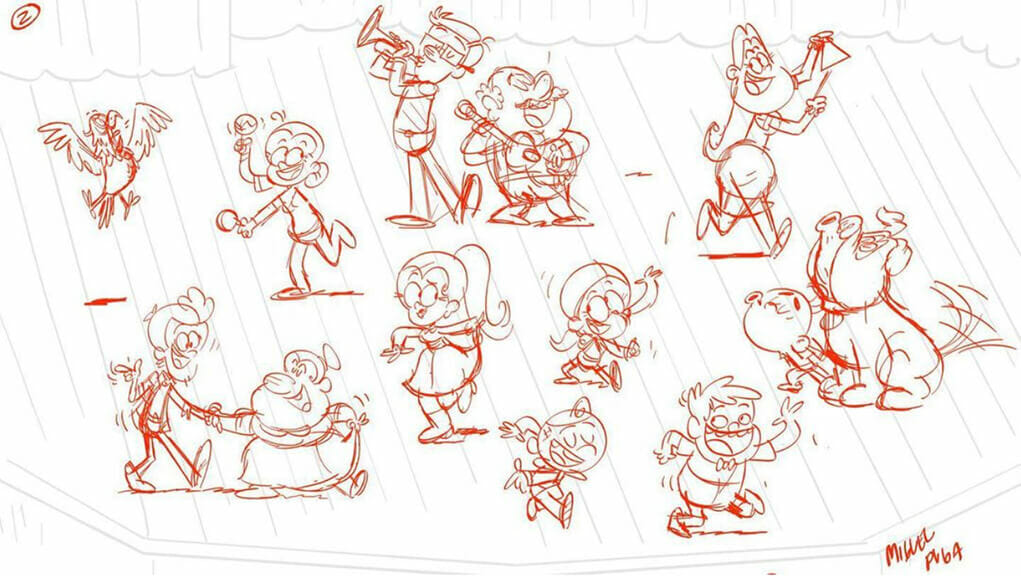
Rosa was inspired by Puga’s own stoic mother and softer grandmother, with most characters being amalgamations of his real-life relatives and childhood growing up in Los Angeles’ Boyle Heights neighbourhood. Now, with his crew, it has truly become a family affair.
“A lot of these things start with a nugget of a real story and then we try to elaborate and embellish them, and turn them into a universal story that is relatable to everyone. The show launched off the way I grew up and now, with everyone on the crew, I feel like everyone pitches their own little nuggets and we get all these amazing stories,” says Puga.
These nuggets include moments from Puga’s childhood that ended up in The Casagrandes. The character of Ernesto Estrella, for instance, is based on the flamboyant Walter Mercado. As a child, Puga’s mother dragged him and his brother to stand in line for hours at a department store to see the famed Puerto Rican astrologer and actor.
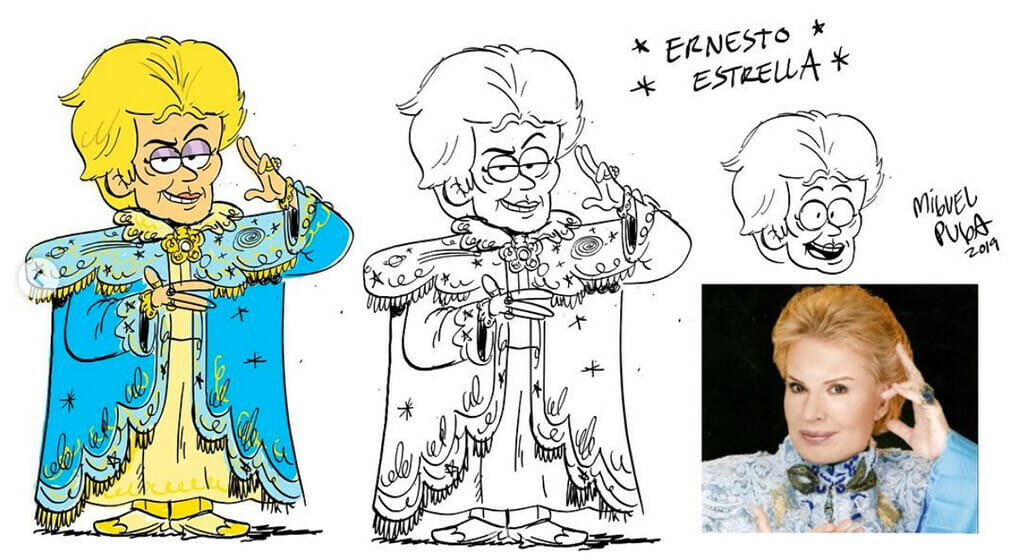
“We finally saw Walter Mercardo being carried in on a golden throne, and my brother and I were so confused. I think my mom felt embarrassed, and everyone was going crazy. Also, the line didn’t even exist anymore because it was just like a zombie horde going towards him so my mom was like, ‘Alright, let’s go home!’ after three hours. I pitched that idea and we had an episode loosely based off of it,” says Puga.
Enriched by thoughtful sound design and music, the world these stories and characters live in was of paramount importance. The Casagrandes differs from The Loud House in that it is set in a city, and Gonzalez had to make it look safe so that children audiences would want to spend time there. A trick he used was adding lots of foliage and greenery, as well as the aforementioned bright palette and Sunday comics style.
Sprinkled throughout the city and series are Easter eggs that are winks to the crew’s families, Mexican-American culture and pop references — from candies they grew up with to Gonzalez’s wife’s name on signage to a blink-and-you’ll-miss-it cameo by the Teenage Mutant Ninja Turtles. While these may be easy to miss, The Casagrandes’ positive impact for diversity, inclusivity and representation of Mexican-American families is clear to see.
Looking ahead, Puga hopes The Casagrandes will encourage other artists to pitch and produce shows that reflect their own childhoods — Latinx or otherwise. He says, “I want any kid that’s growing up right now to see me and say that their dreams are attainable. Just have an idea and go out there and make it — that’s always been my main goal. And if that’s the positive impact I’m giving, then I love it. Someone influenced me growing up, and I hope to influence one or two other people.”
Hopefully, my daughter will follow in my footsteps; I’m kicking the door open for her so she can come sit at the table too.
Miguel Puga



